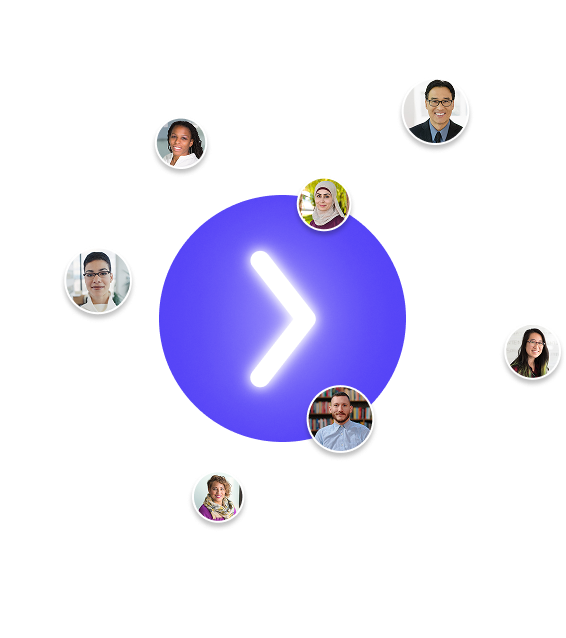
Subscribe to our Blog
We're committed to your privacy. SayOne uses the information you provide to us to contact you about our relevant content, products, and services. check out our privacy policy.

Real PradNovember 27, 202411 min read

Generating table of contents...
Updating legacy applications has become essential for organizations aiming to align their existing infrastructure with modern business requirements. This involves transforming outdated systems into efficient, contemporary solutions aligned with current business goals and technological standards.
Recent data highlights the urgency of this transformation. Gartner predicts that 90% of current applications may become outdated by 2025. Technical debt consumes around 40% of enterprise IT budgets, impacting an organization's ability to innovate and adapt.
As businesses aim to remain responsive to market changes, the modernization process offers opportunities to use new technologies, improve information exchange, and automate time-consuming tasks.
Legacy systems are outdated software or hardware still in use by organizations. These systems often rely on obsolete technology, lack vendor support, and face challenges when integrating with newer platforms.
They can create security risks and incur high maintenance costs. Despite these issues, many businesses continue using them due to familiarity or the complexity of migration.
Common Challenges with Legacy Systems
Application modernization updates your outdated software to meet current business needs and technology standards.
It improves performance, security, and scalability by updating your applications current infrastructure, architecture, and features, often involving cloud migration, API integration, and microservices adoption.
Modern customers expect smooth, easy-to-use, and responsive experiences across all devices. By updating your applications, you can create user-friendly interfaces, add personalization features, and ensure consistent experiences on all devices.
As an entrepreneur, you're probably always looking for ways to make processes efficient and reduce costs. Updating your applications can help you automate routine tasks, get rid of isolated data, and improve how different parts of your business work together.
By using modern technologies like cloud computing, artificial intelligence, and machine learning, you can make your operations work better, reduce mistakes, and free up resources for more important tasks.
By modernizing your applications, you can build solutions that grow with your business. New technologies like cloud-native architectures, microservices, and containerization allow you to easily adjust resources based on demand, ensuring good performance and cost-effectiveness.
Updating your applications allows you to add strong security measures,such as end-to-end encryption, multi-factor authentication, and advanced threat detection.
Key security benefits of updating applications:
By modernizing your applications, you create a foundation for quick innovation and experimentation.
Modern development practices like DevOps and Agile methods help you release new features and updates faster, respond to market changes more quickly, and stay ahead of competitors.
As a business grows, you need to be aware of the long-term costs of maintaining outdated applications. Modernizing applications helps you address technical debt by improving code, updating system structures, and using best practices.
Cloud computing offers a solution to these constraints, providing scalability, flexibility, and cost-effectiveness. By moving your legacy applications to the cloud, you can reduce hardware costs, improve accessibility, and enhance disaster recovery capabilities.
Cloud computing has changed how businesses operate, offering a range of services from Infrastructure as a Service (IaaS) to Platform as a Service (PaaS) and Software as a Service (SaaS).

Consider Netflix, which moved its entire infrastructure to AWS. This allowed Netflix to expand its streaming service globally, handle millions of concurrent users, and deliver content more efficiently.
Here is an example of Top firms who modernized their application using microservice
Monolithic applications can be challenging to maintain and scale. Microservices architecture addresses this issue by breaking down complex applications into smaller, independent services. This approach allows for easier updates, faster deployments, and improved fault isolation.
Microservices offer several advantages over traditional monolithic architectures:
Read more on Microservices vs Monolithic
Generative AI helps update older software systems through automated code updates and intelligent renewal processes. It examines current code to produce optimized versions that meet modern standards. The technology reduces development time by 25-30% while minimizing manual errors.
Large Language Models (LLMs) complement this modernization process by understanding and analyzing complex codebases. They excel at natural language processing tasks and can interpret programming languages to suggest code improvements.
LLMs analyze patterns in existing code structures to generate high-quality, maintainable code alternatives.
Together, Gen AI and LLMs enable automatic scaling optimization and strengthen code quality through computerized testing and evaluation. Teams can concentrate on complex challenges as these AI systems handle routine modernization work, making the process more productive and cost-effective.
Managing application dependencies and ensuring consistency across different environments can be challenging. Containerization technologies like Docker solve this problem by packaging applications and their dependencies into portable, isolated units.
Containerization has become an essential part of modern application development and deployment.
It offers several benefits that make it an important technology for application updates:
In today's data-driven world, AI and ML can give your updated applications an advantage. These technologies can help you automate processes, gain insights from data, and improve user experiences.
AI and ML are changing various aspects of application updates:
Legacy systems often struggle to communicate with modern applications. APIs and integration platforms bridge this gap, allowing seamless data exchange and functionality sharing between different systems.
What are Modern integration platforms features?
As you update your applications, you might face resource constraints or skill gaps. Low-code/no-code platforms offer a solution by enabling rapid application development with minimal coding expertise. These platforms allow citizen developers and reduce the burden on your IT team.

Let's explore the seven key steps to successfully modernize your legacy applications, drawing insights from industry best practices and real-world success stories.
Start your modernization journey by thoroughly assessing your current legacy applications. Identify problems, performance issues, and areas where your systems fall short of meeting business needs.
Key areas to evaluate:
Align modernization with business goals, starting with a pilot project to test and gain insights. Engage stakeholders from various departments to address cross-functional needs, uncovering unexpected opportunities for innovation and efficiency. This collaborative approach ensures comprehensive objectives.
Legacy system modernization requires a tailored approach. As an entrepreneur, evaluate options from rehosting to complete rebuilding based on your needs, budget, and timeline.
Consider system complexity, critical business processes, and organizational risk tolerance when selecting the most suitable modernization strategy.
Your team is the foundation of any successful modernization effort.
This might involve upskilling existing staff, hiring new talent, or partnering with experienced modernization specialists and also a mix of skills and expertise to handle the complexities of legacy application modernization.
The roadmap outlines the steps, timelines, and milestones for updating your legacy applications.
Key components of a modernization roadmap:
Include regular checkpoints and review cycles in your roadmap. This allows you to assess progress, adjust strategies if needed, and ensure alignment with evolving business needs throughout the modernization journey.
During modernization, prioritize quality assurance and thorough testing to meet performance, security, and functionality standards. Involve end-users for valuable feedback and user acceptance.
Utilize automated testing tools and CI/CD pipelines to streamline implementation and ensure a smooth, efficient modernization process.
Modernization doesn't end with deployment. As a forward-thinking business owner, you should view it as an ongoing process of optimization and improvement. Continuously monitor the performance of your modernized applications, gather user feedback, and be prepared to make adjustments as needed.
The "7 R's" framework offers a comprehensive approach to updating outdated systems. Let's explore these strategies:

Rehosting moves existing applications to a new host, typically a cloud environment, with minimal changes. It's ideal for quickly reducing on-premises infrastructure costs and utilizing cloud scalability.
Replatforming involves modest adjustments to applications to take advantage of cloud capabilities. This approach balances speed and benefits, offering improved performance, and reduced operational costs through cloud-native features.
3. Refactor: Optimize the Code
Refactoring restructures existing code without changing its external behavior. This improves performance, and maintainability while preserving core functionality.
Rearchitecting fundamentally changes how an application works, often breaking down monolithic structures into microservices or adopting cloud-native architectures. This approach can significantly improve agility and performance.
Rebuilding involves rewriting an application from scratch using modern architectures and technologies. While resource-intensive, it allows for creating a solution that aligns perfectly with current business needs and future goals.
Replacing legacy applications with off-the-shelf solutions, often SaaS products, can be efficient when business needs have outgrown custom legacy applications.
The retain strategy keeps certain applications as-is while focusing modernization efforts elsewhere.
This is suitable for applications that are still effective, compliant, and not hindering business growth.
Evaluate each system's performance, maintenance costs, and alignment with business goals to decide which to retain.
API management streamlines API sharing and usage, simplifying integration. This allows teams to focus on innovation rather than troubleshooting, improving overall productivity.
Centralized API management provides robust security measures, including OAuth 2.0 and JWT integration. This ensures data protection and regulatory compliance.
API management facilitates scalable system growth, accommodating increased traffic and data processing. Features like rate limiting, caching and load balancing maintain responsiveness during peak times, supporting business expansion.
Older systems often struggle to communicate with newer technologies, causing operational inefficiencies and frustrating business owners. This can lead to fragmented processes and missed innovation opportunities. Creating a cohesive IT environment that supports business goals is crucial.
Delaying modernization can increase costs due to inefficiencies and maintenance expenses. Developing a cost-effective strategy that balances immediate expenses with long-term savings is essential.
Older systems may pose security risks due to outdated protocols and non-compliance with modern standards. Updating these systems improves security measures and ensures regulatory compliance, which is crucial for safeguarding business data.
Finding professionals skilled in both older and modern technologies can be challenging. Bridging this skill gap is essential for successful modernization.
Why Trust SayOne for Your Legacy Application Modernization?
At SayOne, we combine deep technical expertise with tailored modernization strategies to transform your legacy applications.
With a proven track record in delivering successful outsourced projects, we ensure smooth transitions, reduced risks, and faster time-to-market.
Choose SayOne to future-proof your business with innovative solutions that meet your unique needs.Get in touch with us today!

We're committed to your privacy. SayOne uses the information you provide to us to contact you about our relevant content, products, and services. check out our privacy policy.

About Author
Co-founder and CEO at SayOne Technologies | Helping startups and enterprises to set up and scale technology teams- Python, Spring Boot, React, Angular & Mobile.

We collaborate with visionary leaders on projects that focus on quality